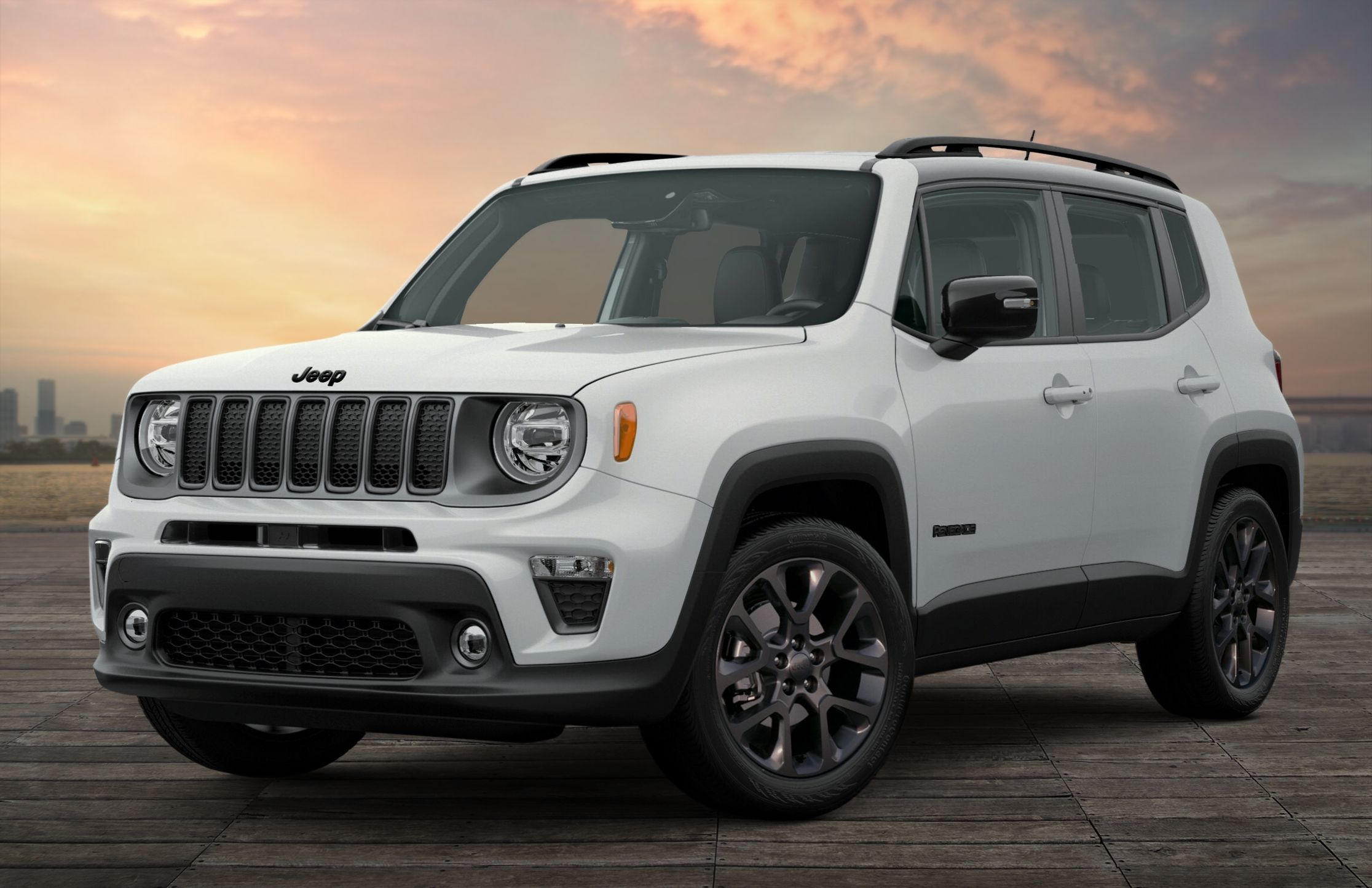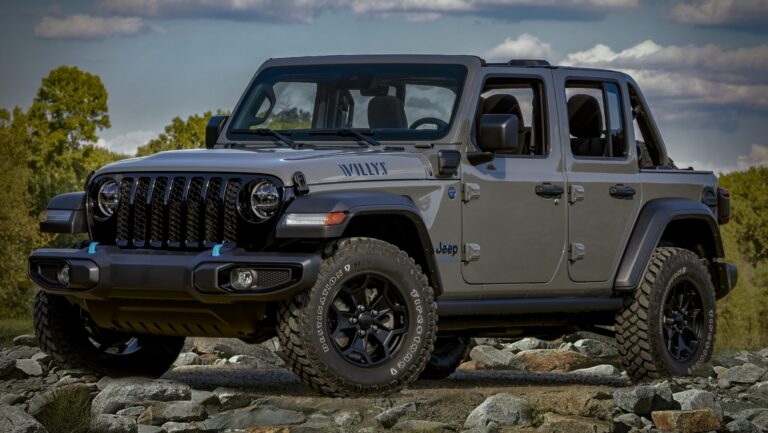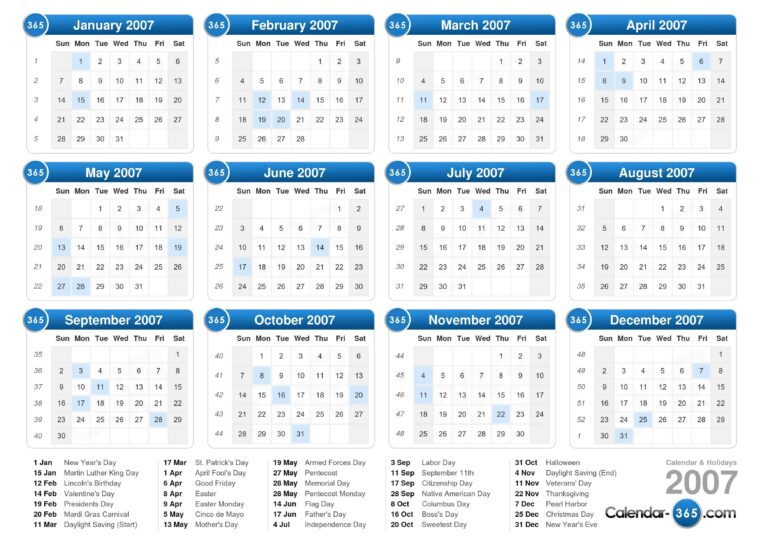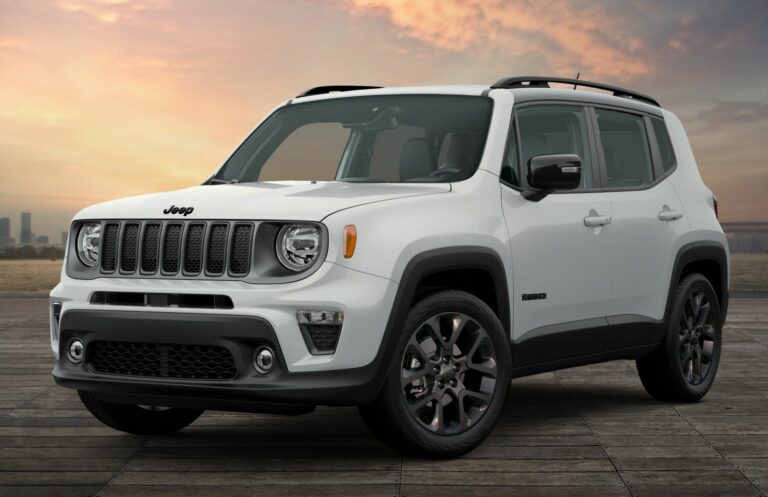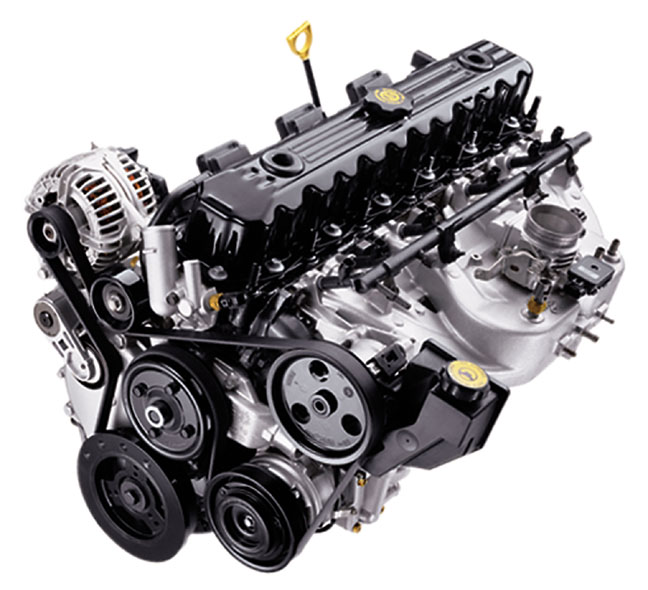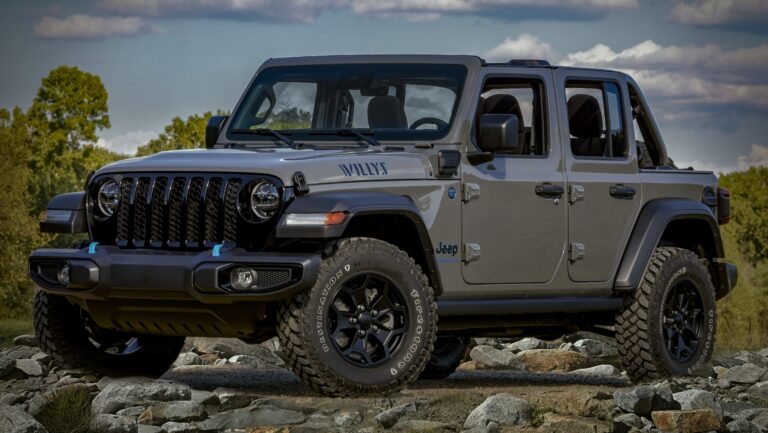Jeep 4.0 Stroker Engine For Sale: Unleashing the Beast Within Your Wrangler
Jeep 4.0 Stroker Engine For Sale: Unleashing the Beast Within Your Wrangler jeeps.truckstrend.com
The Jeep 4.0L inline-six engine is legendary for its rugged reliability and simplicity. A workhorse found in countless Cherokees, Wranglers, and Grand Cherokees, it’s the heart of many off-road adventures and daily commutes. However, even legends can be improved upon. For those seeking more power, more torque, and an even more commanding presence on or off the beaten path, the Jeep 4.0 Stroker Engine emerges as the ultimate upgrade.
But what exactly is a stroker engine, and why is it so sought after? Simply put, a stroker engine modifies the original 4.0L block to increase its displacement, resulting in a significant boost in horsepower and, more importantly for Jeeps, low-end torque. This article will serve as your comprehensive guide to understanding, finding, and considering a Jeep 4.0 Stroker Engine for sale, transforming your beloved Jeep into a true powerhouse.
Jeep 4.0 Stroker Engine For Sale: Unleashing the Beast Within Your Wrangler
What is a Jeep 4.0 Stroker Engine? The Science of More Displacement
At its core, a "stroker" engine is one where the crankshaft’s stroke length has been increased. In the case of the Jeep 4.0L (242 cubic inches), this is achieved by using a crankshaft with a longer throw, typically sourced from a 4.2L AMC engine (found in older CJ-7s and YJs) or an aftermarket performance crank. This longer stroke, combined with specific pistons and connecting rods, allows the piston to travel further within the cylinder bore, thereby increasing the engine’s overall cubic inch displacement.
The stock 4.0L has a bore of 3.875 inches and a stroke of 3.414 inches. A common stroker build might use the 4.2L crankshaft with a 3.895-inch stroke, combined with a re-bored 4.0L block and custom pistons to achieve displacements ranging from 4.5L to 4.9L (272 to 300 cubic inches or more). The result is a larger, more potent engine that retains the original block’s legendary durability and mounting points, making it a relatively straightforward swap for those looking to upgrade.
Why Go Stroker? Benefits and Performance Gains
The allure of the stroker engine lies in its tangible performance benefits, particularly for a vehicle like a Jeep that often requires low-end grunt.
- Massive Torque Increase: This is the primary reason many Jeep owners opt for a stroker. Increased displacement directly translates to more torque, especially at lower RPMs. This is invaluable for rock crawling, pulling heavy loads, or simply accelerating with authority.
- Significant Horsepower Boost: While torque is king for Jeeps, strokers also deliver a healthy increase in horsepower. Depending on the build, gains of 50-100+ horsepower over stock are common, turning your Jeep into a much more capable performer on the highway and trails.
- Improved Drivability: The added power and torque make the vehicle feel less strained, especially when running larger tires or heavier accessories. It reduces the need to downshift frequently, leading to a more relaxed and confident driving experience.
- Retained Reliability (with proper build): When built correctly with quality components, a stroker engine can be as reliable, if not more so, than a stock 4.0L, while offering vastly superior performance. It utilizes the robust original engine architecture.
- OEM Fitment: Since it’s based on the original 4.0L block, a stroker engine drops into existing engine bays without requiring extensive fabrication or modification to engine mounts, transmissions, or transfer cases.

Components of a 4.0 Stroker Build: What Makes It Tick?
A successful stroker build involves more than just a new crankshaft. Here are the key components:
- Crankshaft: Typically a 4.2L AMC crankshaft or an aftermarket forged stroker crank.
- Connecting Rods: Longer rods are often required to compensate for the longer stroke and prevent pistons from protruding too high at Top Dead Center (TDC). Aftermarket forged rods are highly recommended for durability.
- Pistons: Custom-designed pistons are essential. They need to have the correct compression height, skirt design, and dome/dish to achieve the desired compression ratio and clear the cylinder head valves.
- Cylinder Block: The original 4.0L block is usually bored out to accommodate larger pistons and increase displacement.
- Camshaft: A performance camshaft is crucial to optimize valve timing for the increased displacement and airflow, maximizing power and torque gains.
- Cylinder Head: While the stock head can work, a ported or aftermarket cylinder head with larger valves can significantly unlock the stroker’s full potential by improving airflow.
- Fuel System: Larger fuel injectors and potentially a higher-flow fuel pump are necessary to supply enough fuel for the increased air intake.
- Exhaust System: A less restrictive exhaust manifold and cat-back system can help the engine breathe better and unleash more power.
- Engine Management (Tuning): This is perhaps the most critical component. The stock ECU cannot properly manage a stroker engine. A custom tune (either via a re-flashed ECU or an aftermarket programmable unit) is absolutely essential to optimize fuel delivery, ignition timing, and other parameters for the new displacement and camshaft. Without proper tuning, performance will be poor, and damage can occur.
![]()
Types of 4.0 Stroker Builds (Common Displacements)
Stroker builds vary based on the specific crankshaft, bore size, and rod/piston combination. Common displacements include:
- 4.5L (272 cu in): Often achieved with a 4.2L crank and a stock bore. A mild upgrade.
- 4.6L (279 cu in): A very popular choice, often using a 4.2L crank and a 0.030" overbore. Offers a great balance of power and reliability.
- 4.7L (287 cu in): Achieved with a 4.2L crank and a 0.060" overbore. Requires careful attention to cylinder wall thickness.
- 4.9L (299 cu in) and Larger: These usually involve a custom aftermarket stroker crankshaft (longer than 4.2L) and often a significant overbore. These are high-performance builds requiring robust components and expert tuning.
Each increase in displacement generally means more power, but also potentially higher costs, more specialized components, and greater demands on the cooling and fuel systems.
Finding a Jeep 4.0 Stroker Engine For Sale: Where to Look
When searching for a "Jeep 4.0 Stroker Engine For Sale," you’ll primarily encounter three types of offerings:
- Specialized Performance Shops/Builders: These are companies that specialize in building and selling performance engines. They offer various stages of stroker builds, from short blocks to complete, turn-key crate engines. This is often the safest route, as they typically offer warranties and technical support. Examples include Golen Engine Service, ATK Engines, and many smaller, regional performance shops.
- Online Marketplaces (Forums, eBay, Craigslist): You might find individual sellers or smaller builders offering used or newly built strokers. Exercise extreme caution here. Thoroughly vet the seller, ask for detailed build sheets, receipts for parts, and any dyno sheets. A pre-purchase inspection by a trusted mechanic is highly recommended.
- Core Engines for Rebuilding: Sometimes you’ll find a stock 4.0L engine listed as a "core" that can be used as the foundation for your own stroker build. This is for the DIY enthusiast who plans to assemble the engine themselves or have a local machine shop do it.
Important Considerations Before Buying
Purchasing a stroker engine is a significant investment. Here’s what to consider:
- Budget: Stroker engines range widely in price based on components, displacement, and whether it’s a short block, long block, or complete crate engine. Factor in shipping, installation, and ancillary upgrades (cooling, fuel, exhaust, tuning).
- Build Quality and Components: Ask for a detailed list of all components used (crankshaft type, piston material, rod brand, camshaft specs, cylinder head work). Forged internals are preferred for higher performance builds.
- Compression Ratio: Know the static compression ratio. Higher compression generally means more power but requires higher octane fuel.
- Tuning Solution: Confirm if the engine comes with a specific tuning solution or if you’ll need to source and pay for a custom tune separately. This is non-negotiable.
- Warranty: Reputable builders offer warranties. Understand what’s covered, for how long, and what voids it.
- Compatibility: While the 4.0L block fits, ensure the specific stroker build is compatible with your vehicle’s existing transmission, transfer case, and other systems.
- Emissions and Legality: Check local emissions laws. Some highly modified strokers may not pass stringent emissions tests in certain states.
- Break-In Procedure: A new or rebuilt engine requires a specific break-in period. Understand and commit to following it diligently to ensure longevity.
- Cooling System: A more powerful engine generates more heat. Be prepared to upgrade your radiator, water pump, and fan if they aren’t already heavy-duty.
DIY vs. Professional Installation
- DIY Installation: Possible for experienced mechanics with the right tools and knowledge. It saves labor costs but requires significant time and precision. Incorrect installation can lead to catastrophic failure.
- Professional Installation: Recommended for most owners. A reputable shop specializing in Jeeps or performance engines will have the expertise, tools, and potentially the diagnostic equipment for tuning. They can also offer post-installation support.
Maintaining Your Stroker Engine
A stroker engine, while robust, deserves meticulous maintenance:
- Oil Changes: Use high-quality synthetic oil and adhere to shorter oil change intervals (e.g., every 3,000 miles), especially if the engine sees heavy use.
- Cooling System: Regularly inspect and maintain your cooling system. A high-performance thermostat and a properly functioning fan clutch are critical.
- Tune-Ups: Regular spark plug changes, ignition system checks, and air filter replacements are essential.
- Listen to Your Engine: Pay attention to any unusual noises, vibrations, or changes in performance. Early detection of issues can prevent major problems.
Potential Challenges and Solutions
- Overheating: The biggest challenge. Solution: Upgrade to a heavy-duty radiator (aluminum is best), high-flow water pump, new fan clutch, and ensure the cooling system is free of air pockets.
- Tuning Issues: Poor performance, check engine lights. Solution: Work with an experienced tuner who understands Jeep ECUs and stroker engines. This is paramount.
- Fuel System Limitations: Insufficient fuel delivery. Solution: Upgrade injectors and potentially the fuel pump.
- Cost: The primary barrier. Solution: Plan your budget carefully, consider a phased approach (e.g., buying a short block and building up), or save until you can afford a quality complete unit.
- Component Stress: Increased power puts more strain on the drivetrain. Solution: While not always necessary immediately, be prepared for potential upgrades to your transmission, transfer case, or axles down the line if you push the engine hard.
Jeep 4.0 Stroker Engine For Sale: Estimated Price Guide
Prices for Jeep 4.0 Stroker Engines vary significantly based on the builder, components used, displacement, and the completeness of the engine (short block, long block, crate). The following table provides estimated ranges for different configurations. These are estimates and can fluctuate.
| Type of Stroker Engine Sale Item | Description | Estimated Price Range (USD) | What’s Typically Included
4.0L Stroker Short Block (Basic)| A ready-to-assemble foundation, usually consisting of the block, crankshaft, connecting rods, and pistons. It’s fully machined and balanced. | $2,500 – $4,500 | Bored and honed block, 4.2L or entry-level aftermarket crank, new connecting rods (often stock type or budget forged), new pistons (hypereutectic or entry-level forged), new bearings, balanced rotating assembly. Does not include cylinder head, camshaft, valvetrain, or accessories. |
| 4.0L Stroker Long Block (Mid-Range) | A more complete assembly, typically including the cylinder head and valvetrain, making it closer to a drop-in. | $5,500 – $8,500 | All components of a short block, plus a reconditioned or new performance cylinder head (often ported), new performance camshaft, new lifters, pushrods, rocker arms, and timing set. May include a new oil pump. Usually no intake/exhaust manifolds or accessories. |
| 4.0L Stroker Crate Engine (Turn-Key) | A complete engine ready to install, often including intake, exhaust, fuel system components, and sometimes even a basic tune. | $9,000 – $15,000+ | All components of a long block, plus intake manifold, larger fuel injectors, throttle body (sometimes), upgraded exhaust manifold, performance ignition components, sensors, and sometimes even a base tune or pre-programmed ECU. Higher-end builds might include forged crankshafts, higher-end cylinder heads, or more aggressive camshafts. |
| Custom High-Performance Stroker | Built to specific customer requirements, often for racing or extreme off-road use, featuring top-tier components. | $15,000 – $25,000+ | Full custom build with premium forged components (crank, rods, pistons), CNC-ported cylinder head, custom camshaft, dry sump oiling (optional), standalone engine management system, and often dyno-tested results. |
Note: These prices do not typically include shipping, installation labor, or additional required upgrades like an improved cooling system, upgraded fuel pump, or advanced tuning services, which can add thousands to the total cost.
Frequently Asked Questions (FAQ)
Q1: Will a stroker engine fit directly into my Jeep?
A1: Yes, because a stroker engine is built using the original 4.0L block, it retains the factory mounting points and dimensions, allowing it to fit directly into any vehicle that originally came with a 4.0L engine (YJ, TJ, XJ, ZJ, MJ).
Q2: Do I need to upgrade other components in my Jeep for a stroker?
A2: While the engine itself is a direct fit, you will likely need to upgrade your cooling system (radiator, water pump), fuel injectors, and potentially your exhaust. If you plan to heavily use the increased power, consider upgrading your transmission, transfer case, driveshafts, and axles, especially if running larger tires. Tuning is absolutely essential.
Q3: How reliable is a stroker engine?
A3: When built with quality components by a reputable builder and properly maintained and tuned, a stroker engine can be as reliable, if not more so, than a stock 4.0L. Issues typically arise from poor quality parts, improper assembly, or, most commonly, inadequate tuning and cooling.
Q4: Will a stroker engine affect my Jeep’s emissions?
A4: This depends on your local emissions laws and the specific build. While a properly tuned stroker can often pass a tailpipe emissions test, visual inspections for non-OEM components (like certain aftermarket catalytic converters or intake manifolds) might be an issue in some strict states. Always check your local regulations.
Q5: What kind of fuel does a stroker engine require?
A5: Most common stroker builds (e.g., 4.6L with typical compression) will run fine on premium 91-93 octane gasoline. Higher compression builds or those with aggressive timing may require higher octane fuel to prevent pre-ignition (knocking).
Q6: Can I build a stroker myself?
A6: Yes, it is possible for an experienced DIY mechanic with access to a good machine shop. However, it requires precise measurements, specialized tools, and a deep understanding of engine assembly. It’s not a beginner project. Buying a pre-built unit from a reputable shop is generally recommended for most enthusiasts.
Q7: How much power can I expect from a stroker?
A7: A typical 4.6L or 4.7L stroker can produce around 220-250 horsepower and 280-320 lb-ft of torque at the flywheel, compared to the stock 4.0L’s 190 HP and 225 lb-ft. Higher displacement and more aggressive builds can yield even greater numbers.
Conclusion
The Jeep 4.0 Stroker Engine for sale represents an exciting opportunity to dramatically enhance the performance of your beloved Jeep. It transforms a capable workhorse into a true beast, providing the torque and horsepower needed to conquer the toughest trails and make highway driving a pleasure. While it’s a significant investment and requires careful consideration of components, tuning, and supporting modifications, the rewards are undeniable. By understanding the build process, knowing where to look, and asking the right questions, you can confidently embark on the journey to unleash the full potential of your Jeep. When done right, a stroker isn’t just an engine upgrade; it’s a complete transformation of your driving experience.

